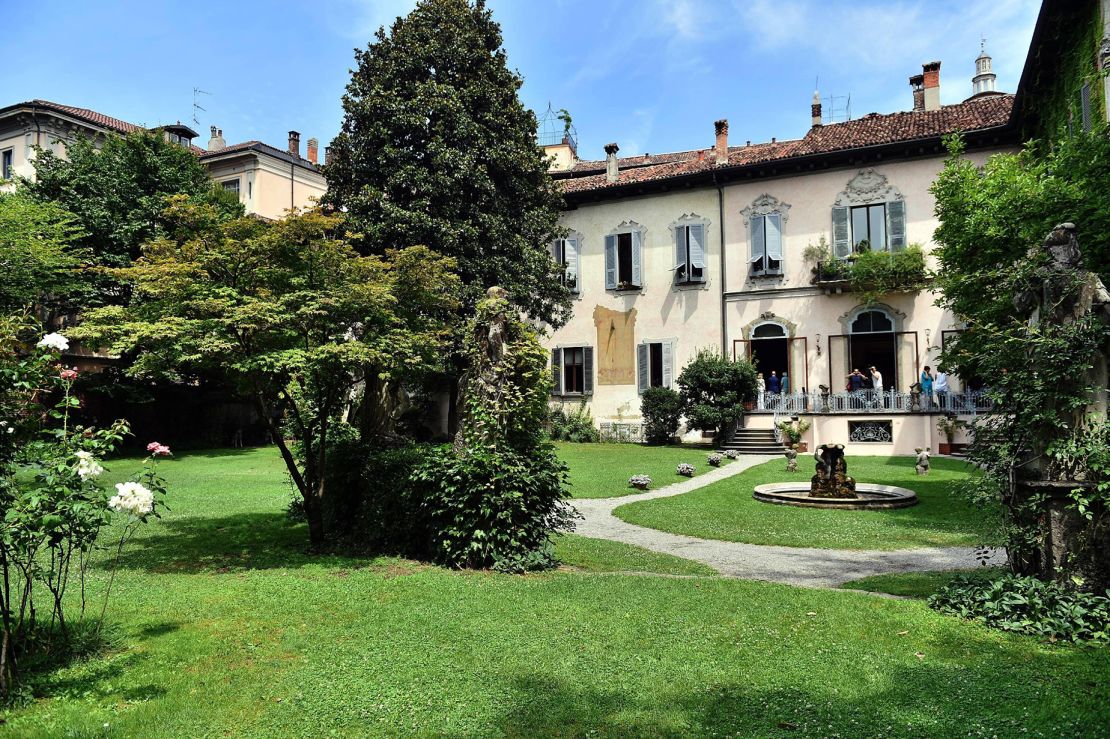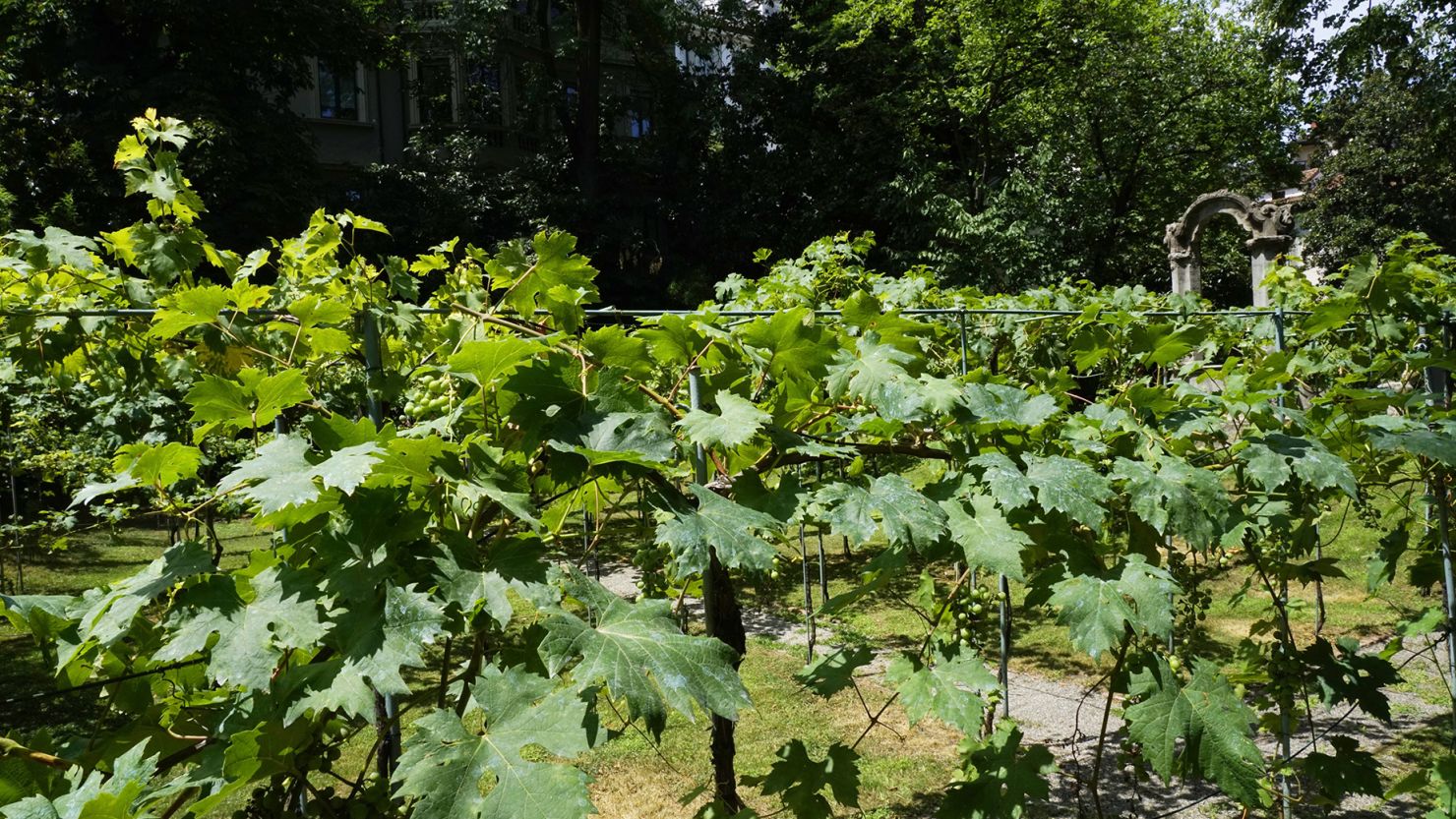Editor’s Note: Sign up to CNN Travel’s Unlocking Italy newsletter for insider intel on Italy’s best loved destinations and lesser-known regions to plan your ultimate trip. Plus, we’ll get you in the mood before you go with movie suggestions, reading lists and recipes from Stanley Tucci.
For over 500 years, it has been a connection to one of the most famous – and elusive – men of all time.
La Vigna di Leonardo – or Leonardo’s Vineyard – is said to be what remains of the Milan vineyard owned by Leonardo da Vinci.
Sitting quietly across the street from Santa Maria delle Grazie church, where his famous “Last Supper” fresco draws crowds from all over the world, what are now a few lines of vines in the back garden of a Renaissance mansion are said to be what remains of the vineyard that da Vinci once owned.
But now, it sits closed, with no opening date on the horizon, after the property was bought by French billionaire Bernard Arnault, said to be the world’s second richest man.
Arnault is CEO of LVMH, which owns luxury brands from Louis Vuitton and Moët Hennessy (hence the acronym) to those like Sephora and DKNY. He bought the Casa degli Atellani – two 15th-century conjoined houses in whose back garden the vineyard sits – in December 2022.
Nine months after the sale, the site has been closed to the public, with no confirmation on whether it will ever reopen.
The land Da Vinci fought for

The history of both the vineyard and the Casa degli Atellani – the two were open to the public together – tell the story of the city of Milan. The house – which is in fact two houses, dating back to 1490 – was gifted to a local family by Ludovico ‘Il Moro’ Sforza, the then-ruler of Milan, as thanks for their loyalty.
Sforza then gifted land behind the houses to da Vinci, after he was pleased with the work the artist was doing on the Cenacolo, or “Last Supper,” which Sforza had commissioned. It’s said that Leonardo would retire to his vineyard to relax after a hard day’s painting across the road.
Not that da Vinci got to enjoy it for long. A year after the vineyard was gifted to him, Milan was conquered by the French, who swiftly confiscated land – including the vineyard.
But da Vinci didn’t forget his vineyard, writing notes about it in his “Codex Atlanticus” and successfully arguing for its return to him in 1507. When he died – in France, in 1519 – he left it in his will to be split between two of his servants. Both parts of the vineyard were passed down the generations, partially being tilled by local monks, until it was eventually lost.
The vineyard was then rediscovered in 1920, when architect Luca Beltrami waded through historical documents to pinpoint the position of the maestro’s property. But soon after, bombing in World War II covered what was left of the land.
It was only in 2007 when a specialist research team returned to the site pinpointed by Beltrami, dug down to find ancient vine roots, and genetically tested them to discover that da Vinci had likely planted the malvasia di candia aromatica grape in his vineyard.
The vineyard – now much smaller – was swiftly replanted, and in 2018, it produced its first harvest. The few bottles it produces each year have been auctioned for a local children’s charity.
Until now, visitors have been able to wander through the house – which was renovated in the 1920s and again after World War II by Piero Portaluppi, perhaps Milan’s greatest architect of the time. Portaluppi’s family owned the building.
The hour-long audioguided visit to the property took in Renaissance frescoes, beautifully carved wooden inlay on the walls, and Portaluppi’s clean, modern style, before opening out onto the garden and the vineyard itself.
Now, all that is in question, with the last tickets to the site sold on September 30.
For Francesca Grignaffini, a cultural travel designer in the city, it’s the end of an era. “For me it’s a double blow – Casa degli Atellani was part of my Leonardo itineraries, and was one of the most requested by foreign tourists, but as a citizen, Milan has been deprived of a place that is not just unique in its genre – the only vineyard in a city on the planet, producing the same malvasia as Leonardo did – but also of a place that was integral for the cultural life of citizens.” She has attended concerts and fashion shows in the grounds, she says.
“Casa degli Atellani wasn’t just the crossroads that marked the history of the Renaissance in Milan, but it’s one of the masterpieces of Piero Portaluppi, a multi-talented genius who redesigned Milan in the post-war period – a unique style that made the city the global capital of design,” she added.
‘A symbol of Italy’
A spokesperson for LVMH said that the property had been purchased privately by Arnault, not for the company. CNN has reached out to Arnault via LVMH for further comment.
The spokesperson said local media reports that quoted “sources close to the family” saying that the site will reopen in some way had not been denied.
“It will have an essentially private use, as it has until now, with one part dedicated to cultural activities and to the public,” the unknown source said.
“The idea is to bring back this building of historical and artistic importance to its original splendor.”
They added that the project would be developed in consultation with the local authorities.
The statement has not been denied by the family. If true, it puts paid to rumors that the site will become a luxury hotel.
Francesca Caruso, councillor for culture for the region of Lombardy, told CNN that although she’s not had contact with the Arnault family so far, she hopes that the anonymous statement is true.
“I hope the Casa degli Atellani and Leonardo da Vinci’s vineyard will remain open to the public,” she said.
“Finding a solution to continue to guarantee access to the site would symbolize an institution that truly believes in the gems that represent our history and identity.
“I’ve not had the opportunity to hear from the owners, but it’s important that we find a way to keep this ‘da Vincian’ site open to the public. It’s a symbol of Milan, and the cultural heritage of Lombardy and of Italy.”
She suggested opening the site to the public on specific hours or days, and added that the Lombardy region wants to create a “da Vinci circuit” – one that “could not leave out such a significant place for Italian history and culture.”



